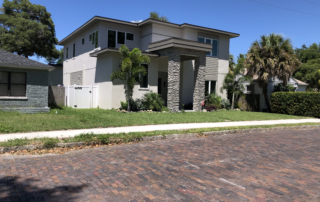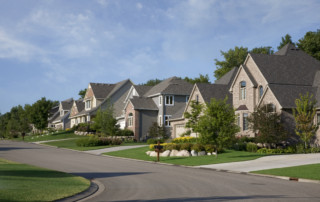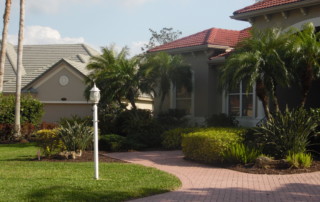For as long as there have been humans, we have been building shelters. And even the earliest structures had to incorporate some type of roof in order to protect its inhabitants from rain, sun and snow. In a way, we have been seeing advancements in roofing materials from as far back as some of our oldest examples – nearly 13,000 years ago.
For a change of pace this week, we thought that we would provide some insight into some little known roofing history – the strange, the interesting, and the useful.
1. Some of the oldest known roofing materials are clay tiles, one of the most popular materials still in use in the Venice area today. These type of tiles have been dated back as far as 10,000 B.C. Other materials which were commonly used between 7,000-8,000 years ago is are thatch and stone.
2. Thatched roofs were an effective roofing materials in many civilizations because the reed they used to construct the roof was naturally waterproof. Builders bundled the reed very tightly, and its waterproof naure allowed it to easily shed water – including rain, snow, and sleet. Thatched roofs could keep the inhabitants and interior dry.
3. To this day, natural building materials hold emotional appeal. In many parts of the country, wood and cedar shakes are still considered the most classic and enviable roofing material. However, many insurance companies are hesistant to provide insurance for a home with wood shingles due to increased fire risk. Some insurance providers will cover a home with a wooden roof, but will charge more for the monthly premium.
4. Even with such a long roofing history and so many types of roofing, the most popular roofing material in the United States by far is asphalt shingle. Given that this material has only been around for approximately 100 years, this may seem surprising. However, consumers love the relative ease and low cost of this material versus other types of roofing.
5. Even though asphalt shingles are more popular, green roofing materials are longer lasting. In fact, although contemporary shingles will last for up to three decades, most other materials, especially natural materials, are much longer lasting.
6. Conventional green roofs which feature plants, grasses and flowers planted on them will not leak if they are installed correctly. The soil, roots and plants protect your roof from sun damage and harsh temperatures. As long as the water barrier is strong and sealed, a green roof can protect your roof from water for decades.
7. Here’s a fun roofing fact that confounds many Venice or Sarasota homeowners. Water travels along a path of least resistance, and often doesn’t appear as a leak before traveling a long distance. In other words, where the leak manifests inside may actually be 20 or 30 feet from the location of the original leak on the roof. (Here are some tips on finding the source of a roof leak.)
8. No matter the roofing material which you choose for your new roof, you can be assured that contemporary roofing materials (when installed properly) will last for 30 years or more. Therefore if you have a roof leak, you may not need to replace the entire roof – it may simply be a maintenance issue such as faulty flashing or a broken asphalt tile. Don’t panic if you see a roof leak – simply call the experts at [company_name] and have us come take a look. If you need a new tile, a hole sealed, or a penetration sealed – we will take care of it.
[company_name] is the Venice area’s premier roofing contractor with a roofing history of our own in the community. How can we help you?




